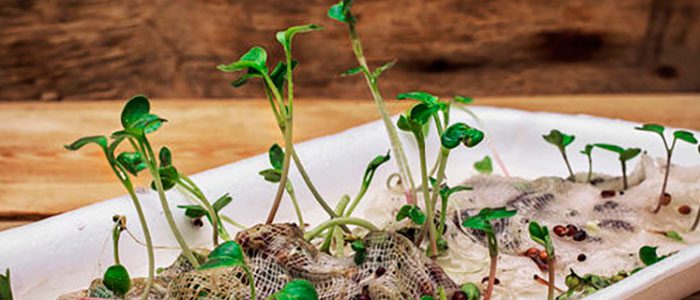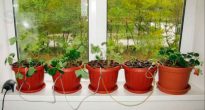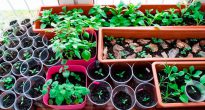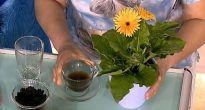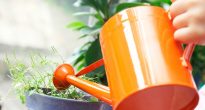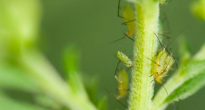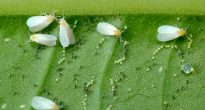There are many different seeds that can germinate fairly well without any prior preparation. However, there are also seeds that simply cannot sprout without preparation, or a very large amount of time passes from the moment of sowing to the first shoots. The process of preparing seeds before planting is not so difficult, and as a result, you will significantly increase their germination capacity and be sure that your labor will not be wasted.
Such seed preparation includes a number of different activities. But it should be remembered that not all of them are so necessary. In most cases, to get an excellent result, you will only need to carry out one of the following activities. And which one, it's up to you to decide.
Content
Seed calibration
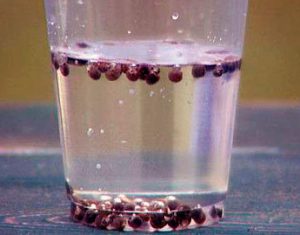 Practically all experts consider training such as calibration to be a must. As a result, you will be able to very quickly select full-fledged seeds and remove empty ones. And this procedure got its name due to the fact that in industrial production at this stage, the seeds are also calibrated in size.
Practically all experts consider training such as calibration to be a must. As a result, you will be able to very quickly select full-fledged seeds and remove empty ones. And this procedure got its name due to the fact that in industrial production at this stage, the seeds are also calibrated in size.
Calibrating seeds is easier than it sounds. To do this, you need to prepare a 5% saline solution, in which you need to immerse the seeds. Wait 5 to 10 minutes, maybe a little longer. Full-fledged seeds should be immersed in the liquid during this time and be at the bottom of the container, and those that will float on top are empty.
But it is worth considering the fact that if the seeds are not fresh and they have already been stored for quite a long time, then the calibration method is not suitable for them, since they will all pop up, both empty and good, viable. It is also worth knowing that only fresh flower seeds are used for calibration.
Soaking the seeds
A procedure such as seed soaking is very common. It is carried out in two ways, namely: using a glass of water or a moistened napkin. If you use water for germination, then it must be changed every 24 hours. And many experts argue that this should be done every 12 hours. In the event that a napkin is used, care must be taken to keep it constantly moist.
Soaking the seeds will allow you to be one hundred percent sure that they are viable, as you will plant them already germinated. But here it is important to plant the seeds on time, while the sprout is not too large. Ideally, it should be 1/2 the width of the seed in length.If the sprout is very long, then when sowing the seeds, you can severely damage it.
Seed hormone
Hormonization will allow the seeds to sprout as soon as possible. This process is due to the fact that you must saturate the seeds with hormonal substances. This can be done using a variety of drugs known as stimulants. So, just an excellent effect is observed from the use of root, heteroauxin and epin. For these purposes, people often use potassium permanganate, boric acid, a one percent solution of soda (food grade), as well as a half percent solution of boric acid. And also very often juice is used to hormone seeds. aloe, and this method shows very good results.
Seed stratification
This method of pre-sowing seed preparation, like many others, is very good and quite popular. The meaning of this event lies in the fact that you will need to "deceive" the seed, or rather, you will have to artificially create the conditions that are inherent in the winter period.
There are several ways to stratify and one of the most popular of them is this. You will need a flower pot or other container. At its bottom, you need to lay a mixture of peat with sand in a ratio of 1: 1.5 in a thin layer. You can also add sphagnum to this mixture, but then all the components will have to be taken in equal parts. After the layer is laid, the seeds should be evenly distributed over it. On top of them, the prepared substrate is again laid out, and on it - seeds, and so on. Then the soil will need to be spilled abundantly enough, and put the container in a polyethylene bag. After that, it must be removed to a place where it is cool enough (from 0 to 5 degrees). For example, a refrigerator is perfect.
While the seeds are being stratified, you will need to systematically check the moisture content of the substrate and monitor how the seeds are "pecking". If the seeds freeze very much during this event, then there will be nothing wrong with that. However, it is worth remembering that defrosting should be carried out exclusively at room temperature and in no case should the seeds be heated artificially.
How much stratification will take place depends entirely on the type of seeds. So, for most flower seeds, 4 weeks are enough. Before proceeding with stratification, it is recommended to soak the seeds so that they swell. Thus, you can reduce the duration of stratification. And you can combine this procedure with calibration.
There are several plants that simply need this pre-sowing event. And these include, for example: feijoa, tea, camelliaas well as many others. When purchasing seeds of plants with which you are not yet familiar, be sure to ask the seller how best to prepare them before sowing.
Scarification of seeds
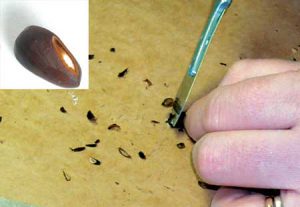 This method of seed preparation before sowing, as scarification, is quite exotic. And most often it is used for seeds that have a too dense shell. As a rule, the destruction of this protective shell and the emergence of a sprout occurs extremely slowly, therefore scarification is designed to violate its integrity.
This method of seed preparation before sowing, as scarification, is quite exotic. And most often it is used for seeds that have a too dense shell. As a rule, the destruction of this protective shell and the emergence of a sprout occurs extremely slowly, therefore scarification is designed to violate its integrity.
Scarification is done both chemical and mechanical. The first way to carry out such a preparatory procedure is suitable only for experienced florists. Despite the fact that this method allows even very old seeds to germinate, it is extremely difficult. The fact is that you may not notice the moment when the scarification process needs to be stopped. However, if you have a lot of seeds in stock, then this method is fine for a beginner too. To carry out chemical scarification, you will need a two or three percent hydrochloric acid solution (you can replace sulfuric acid). The seeds are immersed in this solution, where they are kept until the moment when their shell becomes soft.
Mechanical scarification is simpler, but you still need to be careful when performing it. You will need a knife, a file, and so on, with which you must break the integrity of the seed shell. Coarse-grained sand can also be used for this (the seeds are ground together with it). This preparation method is relevant for banana, date and canna seeds.
Seed dressing
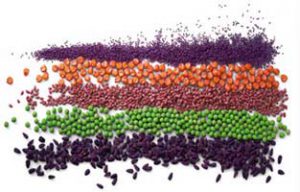 Dressing can protect the seeds and the sprouts that have emerged from them from a variety of diseases. This is especially true when the seeds are sown directly into open ground. Seeds are commercially available that have already been pickled and are usually colored in colors such as blue, pink, red, and so on. If you purchased untreated seeds, then before sowing, you need to place them in a pinkish solution of potassium manganese or any other fungicide for a while (at least half an hour).
Dressing can protect the seeds and the sprouts that have emerged from them from a variety of diseases. This is especially true when the seeds are sown directly into open ground. Seeds are commercially available that have already been pickled and are usually colored in colors such as blue, pink, red, and so on. If you purchased untreated seeds, then before sowing, you need to place them in a pinkish solution of potassium manganese or any other fungicide for a while (at least half an hour).
Here are the most basic ways to prepare seeds before planting, which will be enough for a novice grower. However, there are other methods, for example, such as: freezing, scalding, snowing and others.

